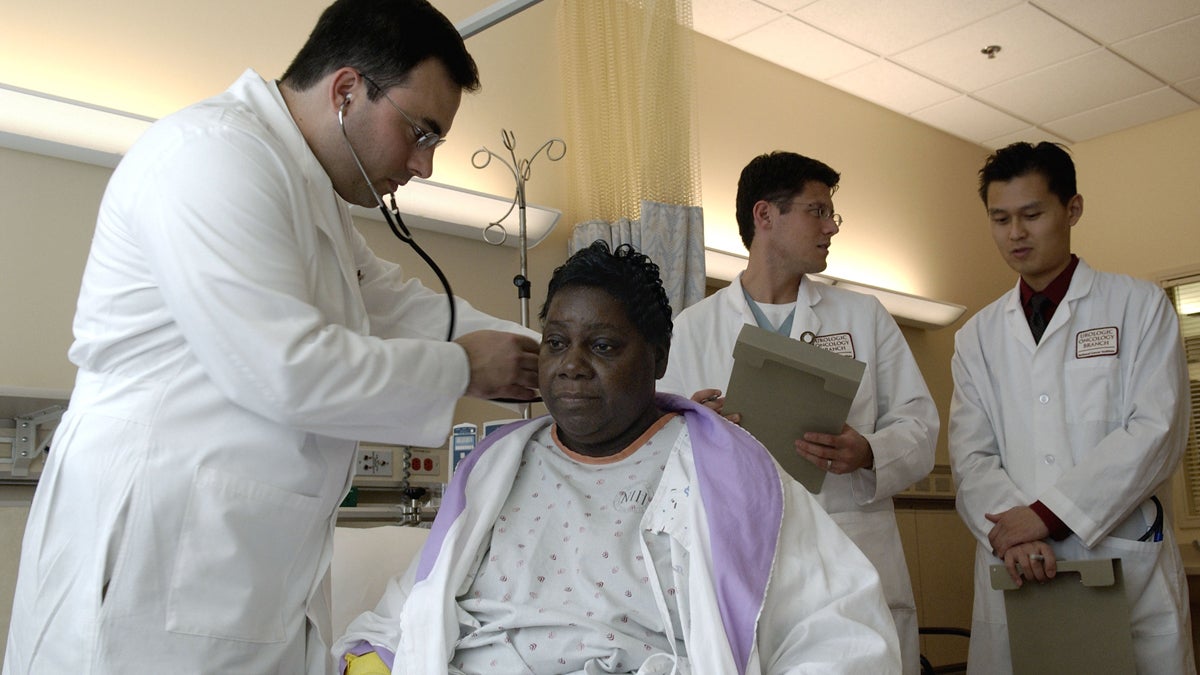In African American neighborhoods, primary care may be harder to find

A physician performs a standard physical exam on a patient. (Credit: National Cancer Institute)
A new study finds a link between the racial makeup of Philadelphia neighborhoods and the number of primary care doctors who work there.
A new study finds a link between the racial makeup of Philadelphia neighborhoods and the number of primary care doctors who work there.
The study, conducted by researchers at the Christiana Care Health System, the University of Pennsylvania, Boston University, and the French Institute for Agricultural Research, measures primary care doctors per resident in Philadelphia’s census tracts.
The researchers found that neighborhoods in Philadelphia with a high proportion of African Americans are 28 times more likely to meet the definition of a “low-access area.” That’s an area that falls at the bottom of the rankings, having the fewest primary care doctors per resident.
The study adjusts for poverty rates and levels of insurance within neighborhoods.
Having fewer primary care doctors near your home could make it harder to get medical care, says Dr. Elizabeth Brown, study co-author and physician at the Christiana Care Health System. “If there aren’t sufficient primary care doctors in your area, it may mean that some patients have to travel a little bit farther, those physicians may have longer wait times to get appointments, those kinds of things,” Brown said.
The study’s results might be worth considering when deciding where to build new clinics, Brown added.
WHYY is your source for fact-based, in-depth journalism and information. As a nonprofit organization, we rely on financial support from readers like you. Please give today.


